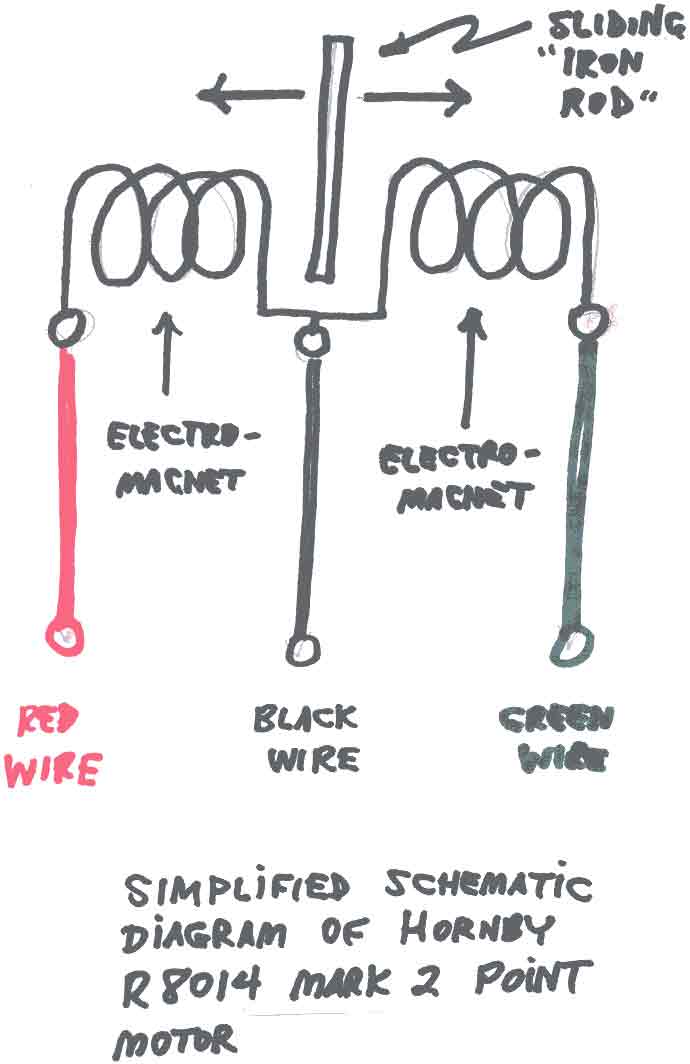Note: an electromagnet is a coil of wire that becomes magnetized when electric current runs through the coil. When the current stops, the coil is no longer magnetized. This is a well-known fact of nature that was discovered by the famous physicist Hans Christian Oersted way back in the year 1820, while he was teaching an evening class in Denmark.
--more--

Please look at the schematic diagram. When all three wires are properly connected to a source of current, such as the 16-volt AC terminals of a Hornby controller, current can be forced to run through either the red wire or the green wire. When current runs through the red wire, the coil on the left becomes magnetized, thereby pulling the "iron rod" to the left. Likewise, when current runs through the green wire, the "iron rod" is pulled to the right.
The purpose of the black wire is to guide the coil-current back to the Hornby controller after the current runs through either the red coil or the green coil. If the black wire (the "common wire") were not there, the current wouldn't run at all - every electric current must have a "return path" to the source (this is another fact of nature).
Go to top of page